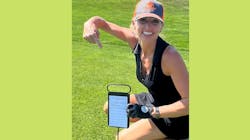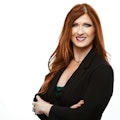Sleep medicine the name of the game for Dr. Erin Elliott
You are one of dentistry’s leaders in sleep dentistry. What got you interested in sleep?
I was at the Idaho State dental meeting in the summer of '08 and I heard talks from both a sleep physician and a sleep dentist. I was fascinated, mesmerized, and excited that dentists could be part of a patient's journey for a better night's sleep. Of course dentists should be part of this because sleep apnea is not an old fat man's disease, and the mouth holds many clues. Plus, dentists know our patients and see our patients much more often than a medical doctor. But here’s the real reason I got into sleep medicine. I love to sleep (there are quite a few photos on social media proving how much I like to sleep, anywhere and anytime), and I can't believe some people are trying to function in this world without good quality sleep. If someone can’t wake up rested after a full night's sleep, when are they rested?
More Advisory Board profiles
Dr. Clint Timmerman
Dr. Paul Goodman
How has incorporating sleep impacted your practice?
I started implementing sleep in 2009 and it was slow. People hadn't made the connection yet that dentists could be in sleep medicine. I hit the pavement and spoke to community groups, all sorts of physicians and midlevel providers, at health fairs, and to the patients in my hygiene chairs. This gained traction, but now the time for sleep medicine is even better because consumers are more educated. Dentists come to my course to learn how to implement because they have so many patients asking about sleep, and they don't want to turn any more of them away. Getting into this has set our office apart. We have people who drive from all over to see us and many who make a dental appointment with us because they don't have a dental home and initially came our office for sleep treatment.
What advice would you offer our colleagues who are contemplating bringing the practice of sleep to their patients?
If you’re looking for advice on bringing this into your practice, I would say be patient. It's a slow brew. As my friend and mentor, Dr. Tarun "T-Bone" Agarwal, says, "Give yourself a long runway." My second tip is to get the team involved and get yourself out of their way when possible.
What are some technologies that you rely on for excellent and predictable results?
I couldn't practice without my Primescan Connect to scan for full arches and protrusive bites. I love using our 3D cone beam to look at nasal obstructions and find pathology that patients are not aware of because their previous dentist didn't have the same technology.
Editor's note: This article appeared in the November 2022 print edition of Dental Economics magazine. Dentists in North America are eligible for a complimentary print subscription. Sign up here.
About the Author
Pamela Maragliano, DMD
Chief Editor of Dental Economics
Pamela Maragliano, DMD, is the chief editor of Dental Economics. Based in Salem, Massachusetts, Dr. Maragliano began her clinical career as a dental hygienist. She went on to attend Tufts University School of Dental Medicine, where she earned her doctorate in dental medicine. She then attended the University of California, Los Angeles, School of Dental Medicine, where she became board-certified in prosthodontics. Dr. Maragliano owns a private practice, Salem Dental Arts, and lectures on a variety of clinical topics. You may contact her at [email protected].

